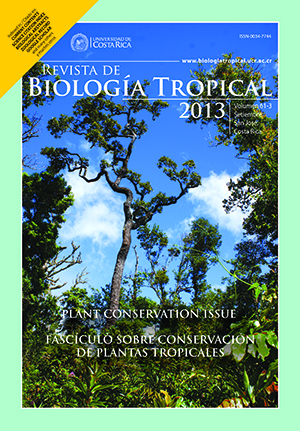Resumen
Las zonas áridas y semiáridas ocupan más de la mitad del territorio de México, sin embargo, son ambientes donde los escarabajos necrófilos han sido escasamente estudiados. En esta investigación se presenta la diversidad y fenología de Scarabaeidae, Silphidae, Staphylinidae y Trogidae en el valle de Zapotitlán de las Salinas, Puebla. Se realizaron muestreos mensuales durante un año de abril de 1998 a marzo de 1999 empleando trampas tipo NTP-80 cebadas con calamar, distribuidas en un mezquital y matorral espinoso, en cactáceas columnares y vegetación alterada. Se capturaron 613 individuos de 12 géneros y 15 especies. Staphylinidae tuvo la mayor riqueza (9 especies) y abundancia (74.2%), le siguieron Scarabaeidae (21.9%), Silphidae (2.9%) y Trogidae (1%) con dos especies cada una. La fauna para las dos primeras fue inferior a la observada en otras zonas de México. La máxima abundancia y riqueza estuvieron en la época seca y las comunidades de escarabajos necrófilos prefirieron los sitios con mezquital y matorral, donde permanecieron más tiempo y se registraron todas las especies, por lo tanto los tipos de vegetación presentes fueron el factor más importante que determinó las variaciones locales de abundancia, diversidad y riqueza y no la época de lluvias.##plugins.facebook.comentarios##
Descargas
Los datos de descargas todavía no están disponibles.






